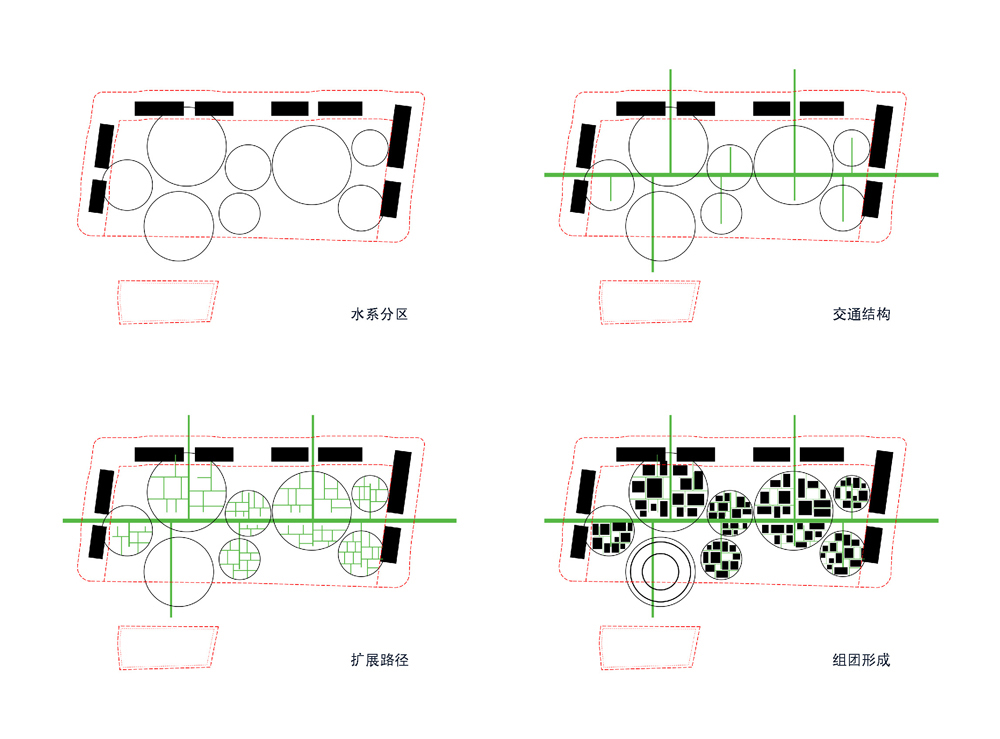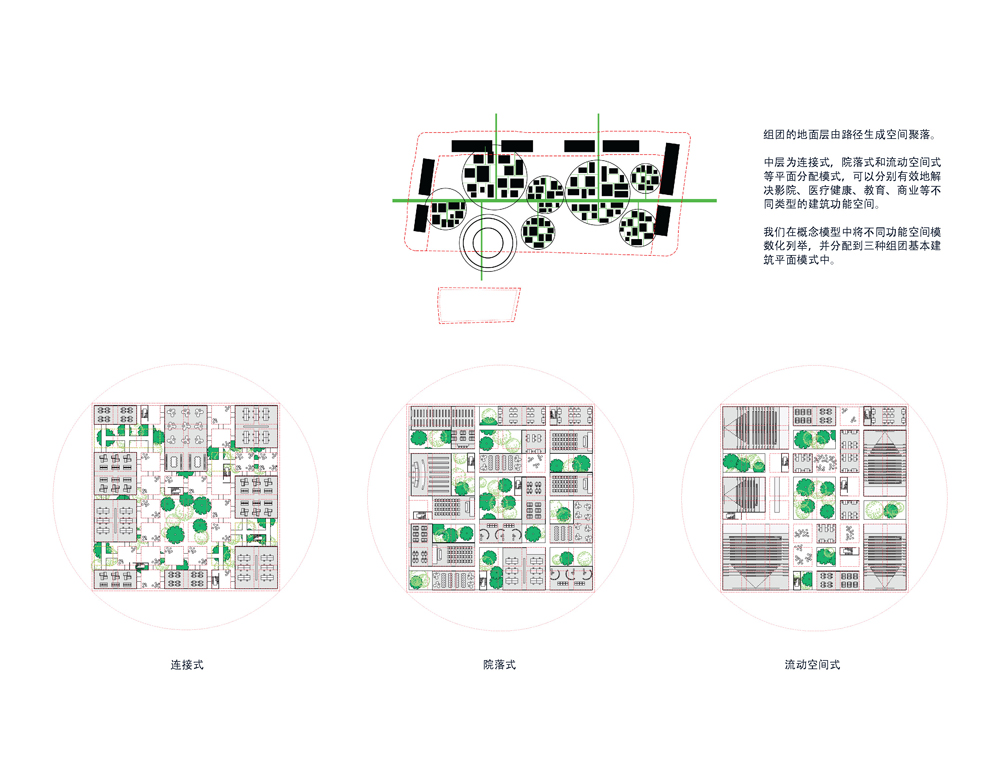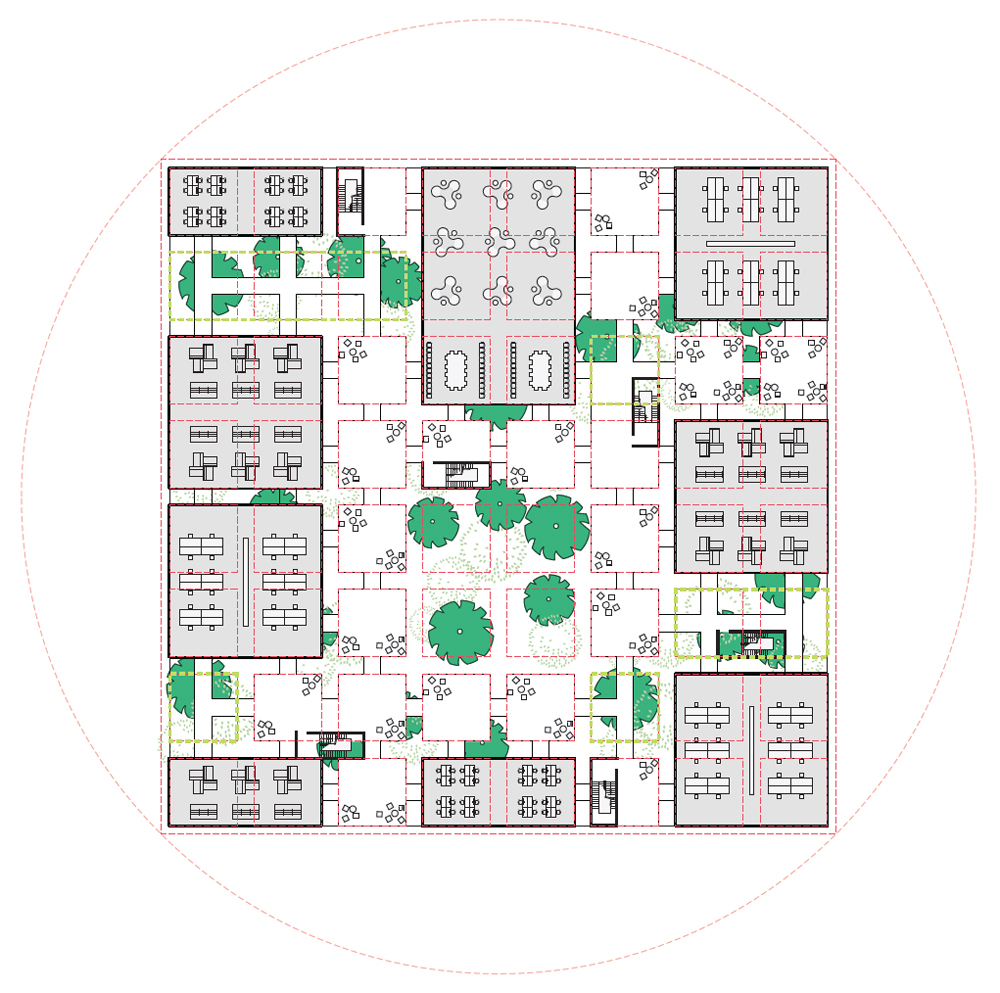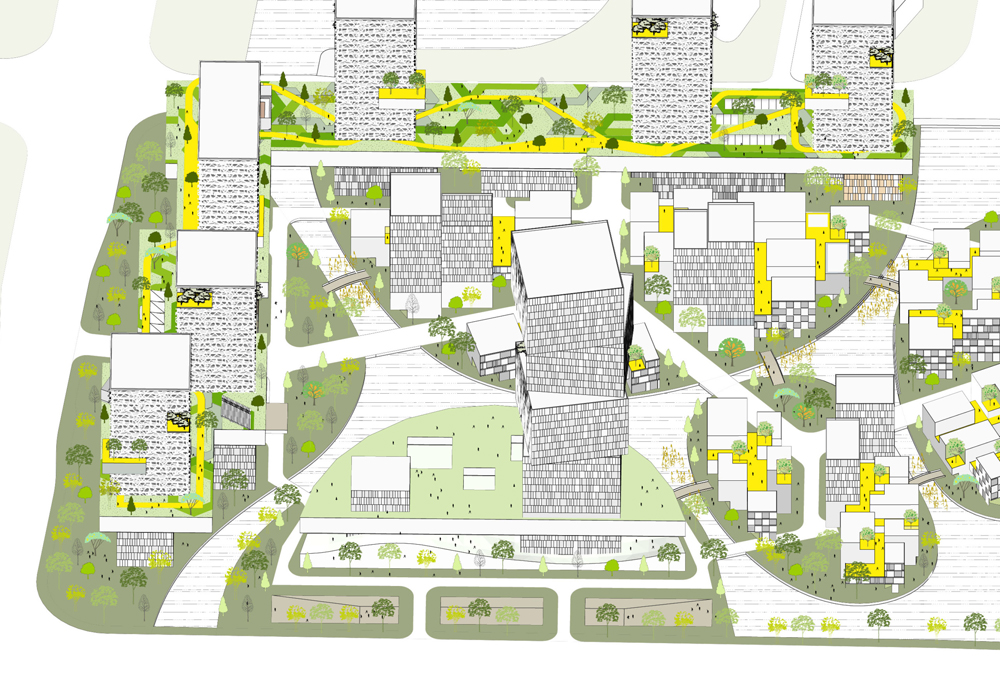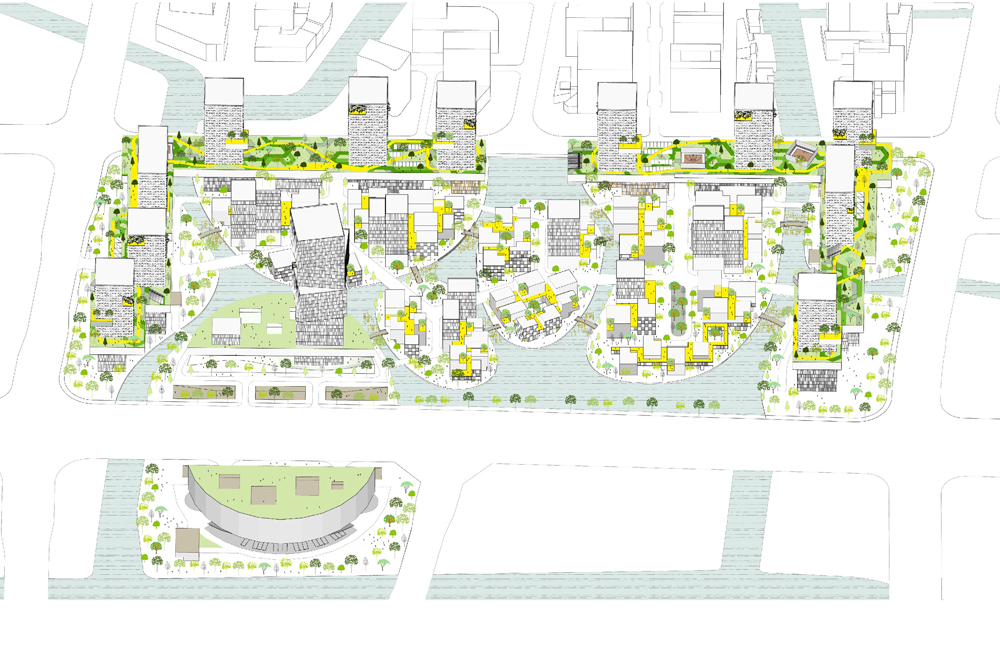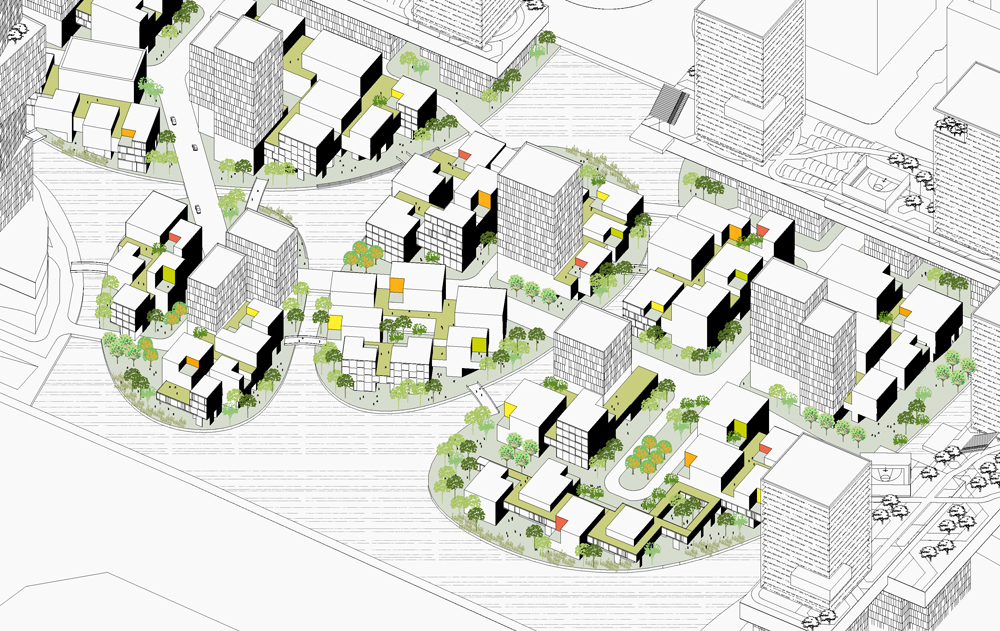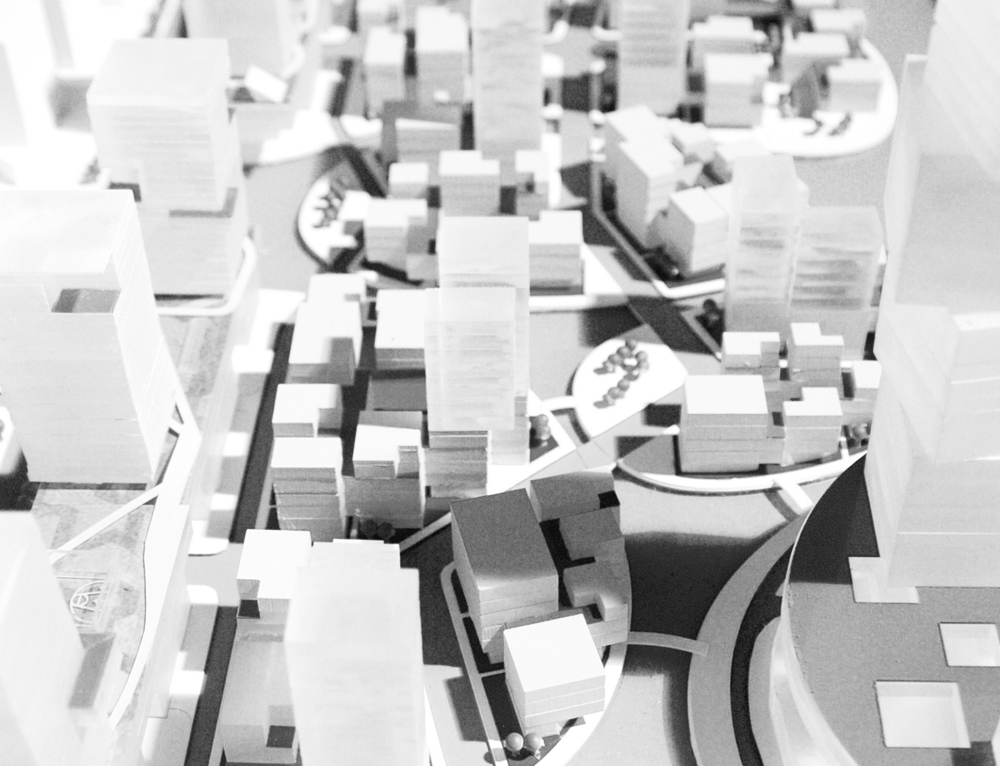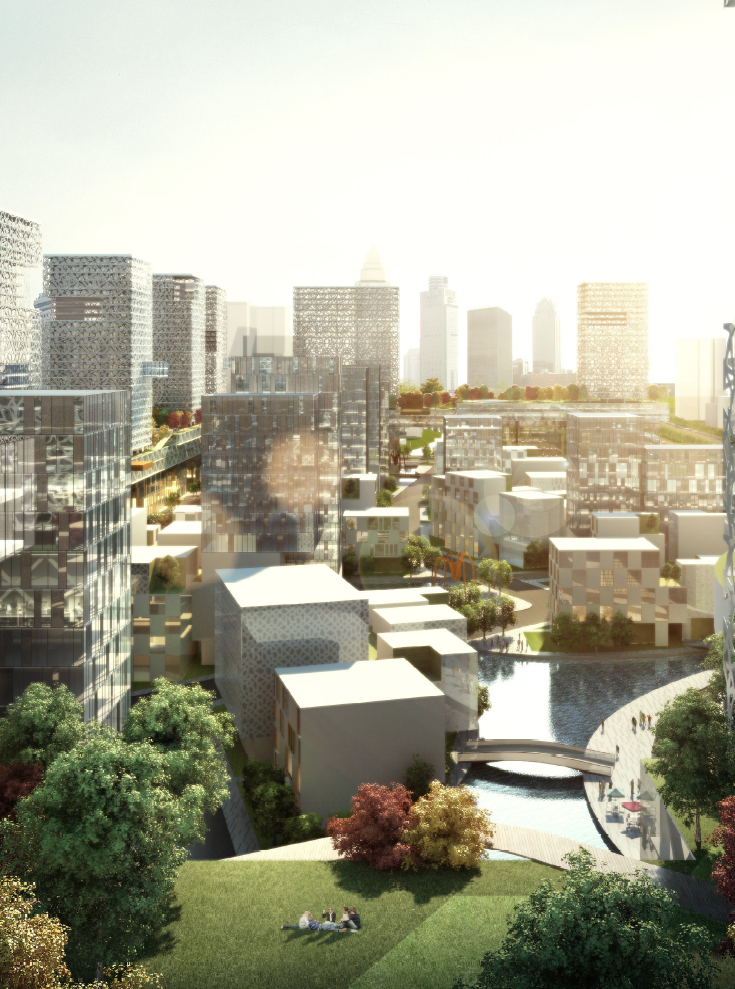Yinzhou is a city full of water. This place successfully represents the characteristic of the Jiangnan water town. In this sense, water-based landscape becomes the primary issue for conceiving the design.
This option decomposes the site into water system and islands. Two-levels hierarchical roads connect these islands and prevent the motor-transportation going inside into the islands, so as to keep most of the places for pedestrian and waterfront landscape. Through the research based design method, we put the different functions, such as commercial, entertainment, cultural, education and working space, into the typical spatial and circulative diagrams, then formulate them typologically into the islands.
This kind of planning method gives a idea of ” slow life” of the “slow city”. Inhabitants are able to enjoy the pedestrian routes, the waterfront landscape for leisure, and more public spaces to free people from the closed working places. The planning also provides the possibility for inhabitants having closer communication and aims to create a friendly neighborhood.
鄞州是一个水的城市,江南地区错综复杂的水网体系特征在这里被发挥地淋漓尽致。因此,水系景观成为了该商务区设计之初的根本出发点。
本方案将原场地细分成为水系和岛屿纵横的丰富地块。连接岛和岛之间的主、次道路既要简捷,又要曲折,并使机动交通尽可能在外圈解决,以腾让出中间区域的步行空间和滨水景观。中间区域的建筑功能为商业、娱乐、文教和办公,我们用研究式设计的方式,归纳出符合不同功能需求的各类交通和建筑空间组织形态,并用类型学方式将其代入由水系环绕的岛屿中。
这种结构支撑了“慢城市”中的“慢生活”。在这里,有更多的空间供人们散步,有更多的水岸供人们休闲娱乐,也有更多的城市空间可以让办公室从封闭的写字间走到街上茶座和咖啡馆。它重新拉近了人和城市之间的距离,促成了在冷漠的当代城市中人和人之间亲密接触的可能。

